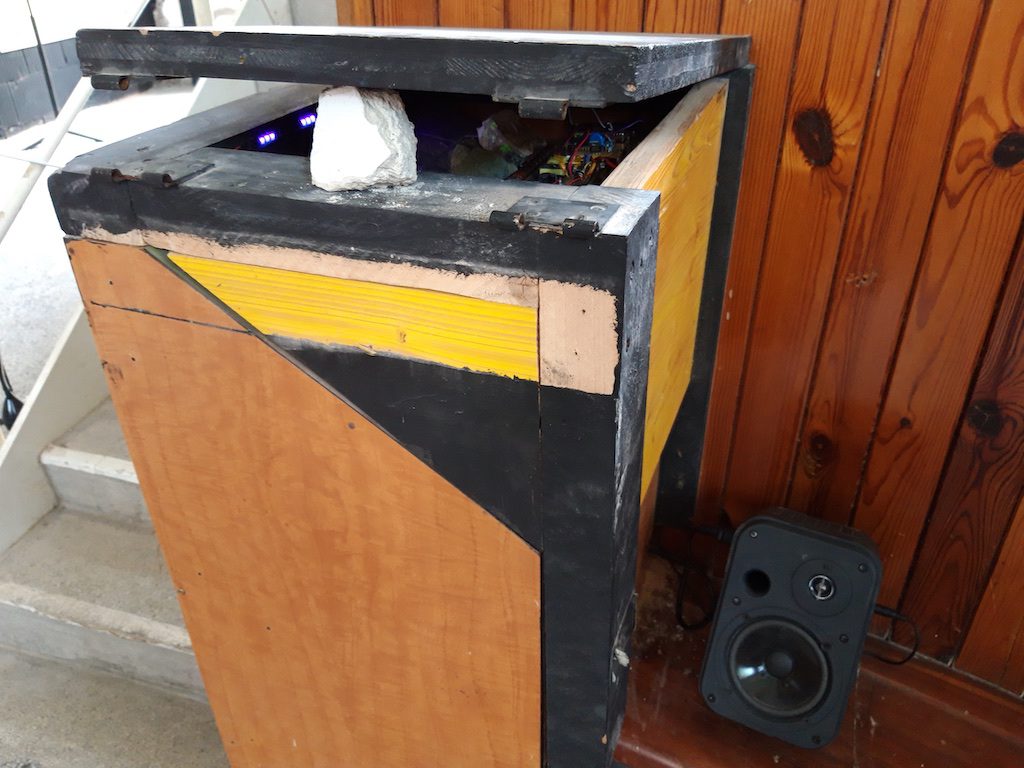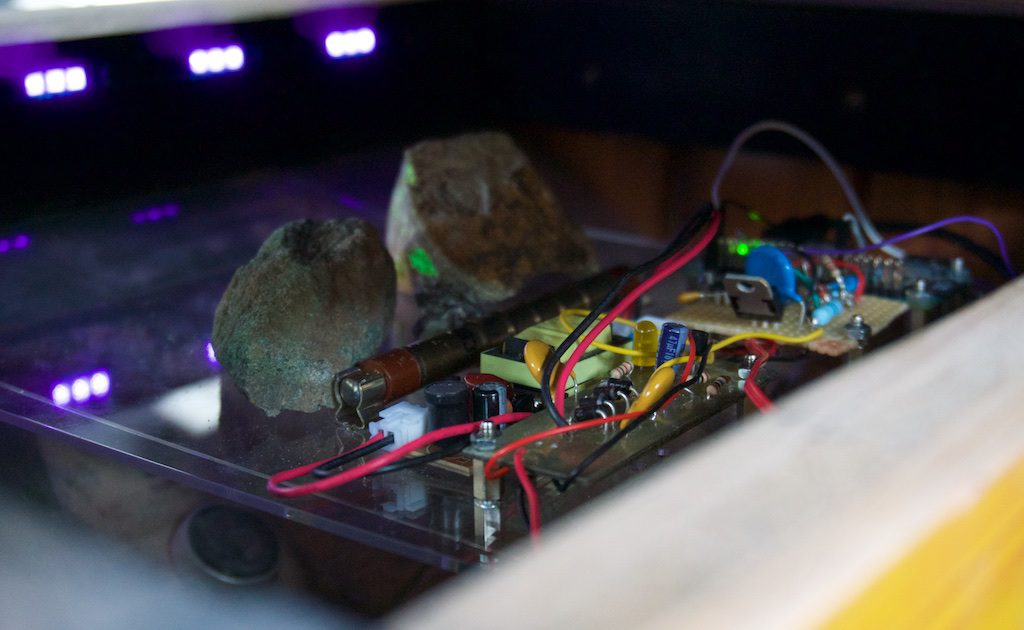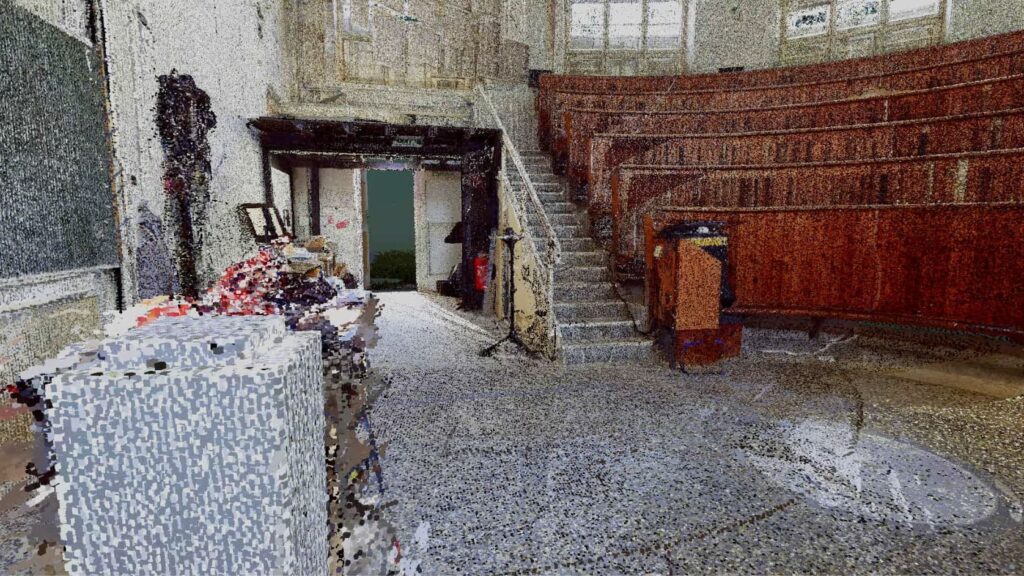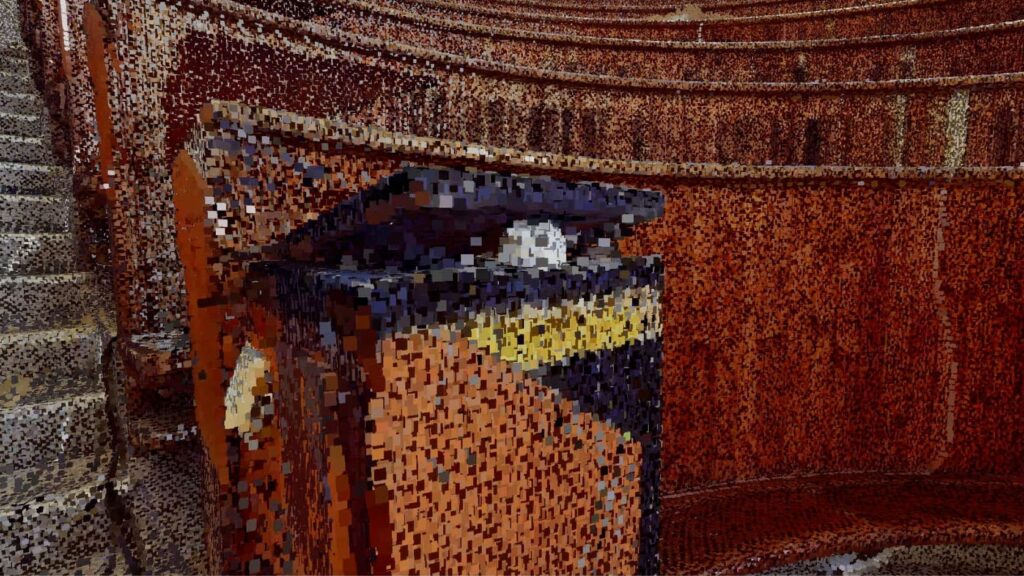by Martin Howse, 2019
commissioned by rotting sounds
Custom electronics, radioactive material, ultraviolet light

Depleted uranium: a byproduct of enrichment used as armour plating and armour penetrating projectile. Biological/radioactive half-life: 15 days/4.468 billion years respectively.
Enriched uranium: a type of uranium in which the percent composition of uranium-235 has been increased through a process of isotope separation. Uranium is enriched to fuel nuclear power generation and for military nuclear weapons use.
/Enrichment and depletion/ attempts the simple digital play back of the mineral or lithic, the sucking stone tapes, in order to enter into deeper times of the geologic and of media sedimentation
We wish to play back a clear instance of decay and dissolution, of the loss of energy and identity enacted by radioactive decay. Forms of playback can equally be considered as engaging in material and informatic decay or deterioration. Magnetic tapes are ground down and eroded geologically by the repeated application of the read head, memory bits must be energetically reset as they are destroyed by a digital readout, paper and ink are worn thin on repeated readings.
And in the moment of their capture by instrumentation, through their observation, the energies of the cosmos are consumed; they die out.
/Enrichment and depletion/ sets out to replace the oracular and significant writing of the stones, the ghostly stone tape with its geological palimpsest, with a clear and meaningless output of planetary depletion, only the earth and universe in dissolution.
Any atomic or sub-atomic change within materials implies a nuclear transmutation. Radioactive decay, also known as nuclear decay or radioactivity, is the process by which a nucleus of an unstable atom loses energy by emitting ionizing radiation. A material that spontaneously emits this kind of radiation – which includes the emission of alpha particles, beta particles, and gamma rays – is considered radioactive.
Radioactive minerals containing uraninite and sprouting yellow and green crystals of autunite and meta-autunite, sourced from sites of cold war uranium mining in Germany’s Erzgebirge region, are placed next to a geiger counter tube. Each local decay event delivers a pulse which is subsequently stretched and treated as a one bit sample. A single pulse within a time frame (a sample rate of twice the average counts per second) is treated as a one, an absence as a zero. These single bits are collected in a circular buffer, cycled through and played back at a higher rate as a one bit encoded audio stream. New bits are slowly added to the circular buffer as they are read in. It’s a repeating rocky tape loop.
The interval between these detected decay events or bits presents a high entropy source of randomness. Although we know that in 4.5 billion years half of the stock of uranium-238 atoms will have decayed into thorium-234, we have no way of knowing exactly when an atom will decay, producing as part of this energetic transformation a beta particle which will strike the geiger tube and trigger a bit count.
Given the half life of the isotopes within the active material (Uranium-238 and Uranium-235) /Enrichment and depletion/ will emit quite a different recording or playback in perhaps a few billion years.
Archive
You can find archived sounds of the piece (1 min per hour) at the Rotting Sounds Archive.




